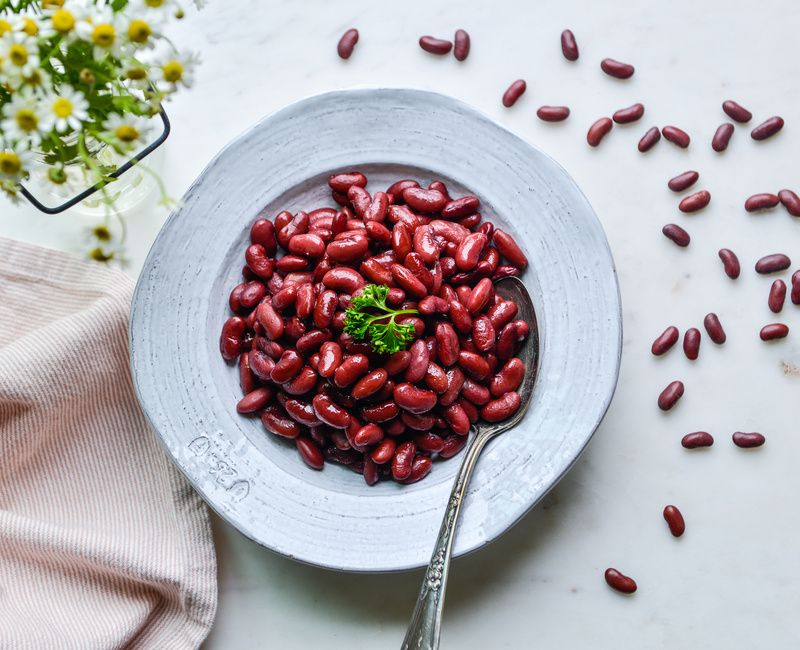IFM Mito Food Plan
The Mito Food Plan is a therapeutic, science-based approach to eating designed to support mitochondrial function, optimize cellular energy production, and promote healthy aging. Developed by a team of Functional Medicine experts, this anti-inflammatory, low-glycemic, gluten-free, and low-grain dietary plan uses nutrient-dense, high-quality foods to protect the brain, reduce fatigue, balance blood sugar, and slow down neurodegeneration. By emphasizing specific therapeutic foods, healthy fats, and strategic meal timing, the Mito Food Plan helps prevent cognitive decline, support pain reduction, and restore energy—using food as powerful medicine for your mitochondria.

Latest Anti-Inflammatory Diet Recipes
IFM Mito Food Plan Safe with Modifications
What is the Mito Food Plan?
The Mito Food Plan is a specialized therapeutic diet created to support mitochondrial health—the energy-producing centers of every cell. It emphasizes:
-
High-quality fats (especially omega-3s and MCTs)
-
Adequate, clean protein
-
Phytonutrient-rich plant foods
-
Low-glycemic carbohydrates
-
Strategic meal timing and intermittent fasting
This plan promotes brain and nervous system function, energy metabolism, detoxification, and reduced inflammation, all while maintaining a gluten-free, low-grain foundation.
Who is the Mito Food Plan For?
This plan is designed for individuals who:
-
Experience chronic fatigue, brain fog, or memory issues
-
Are at risk for or diagnosed with neurodegenerative diseases (e.g., Alzheimer’s, Parkinson’s, MS, ALS)
-
Suffer from chronic pain, fibromyalgia, or inflammation-related muscle loss
-
Have insulin resistance, blood sugar dysregulation, or metabolic syndrome
-
Seek to improve brain performance, mood, and mental clarity
-
Are looking to slow the aging process and increase longevity
-
Want to reduce oxidative stress and support detoxification pathways
-
Thrive on ketogenic or lower-carbohydrate diets
This plan may also benefit those recovering from mold toxicity, environmental exposures, or mitochondrial dysfunction.
How Does the Mito Food Plan Work?
The Mito Food Plan works by targeting several physiological mechanisms involved in mitochondrial decline:
-
Energy Support: Provides nutrients (CoQ10, B vitamins, carnitine, healthy fats) essential for ATP production.
-
Anti-Inflammatory Action: Reduces systemic inflammation with phytonutrients, omega-3s, and curcumin-rich foods.
-
Antioxidant Defense: Boosts glutathione and other antioxidants to protect mitochondria from oxidative stress.
-
Blood Sugar Regulation: Emphasizes low-glycemic foods to prevent insulin spikes and metabolic damage.
-
Brain Protection: Encourages foods that activate BDNF, a key protein for neurogenesis and cognitive function.
-
Ketogenic Option: Allows for a flexible ketogenic approach to improve mitochondrial resilience and fat-burning capacity.
-
Intermittent Fasting: Incorporates 12–24 hour fasting windows to trigger mitochondrial biogenesis and reduce inflammation.
This comprehensive approach ensures cellular renewal, cognitive support, and metabolic balance.
Foods to Eat on the Mito Food Plan:
The foundation of this diet includes:
-
Proteins: Grass-fed beef, wild game, pasture-raised poultry, wild-caught fish (especially salmon, sardines, mackerel), eggs, spirulina, tempeh, and tofu
-
Fats & Oils: Coconut oil, MCT oil, extra virgin olive oil, ghee, avocado oil, flaxseed oil, grass-fed butter, nuts, and seeds
-
Vegetables: All non-starchy vegetables (broccoli, kale, spinach, chard, crucifers, fermented vegetables, seaweed), 8–12 servings daily
-
Fruits: Berries, apples, pomegranate seeds, cherries, grapes (with skin)—2–3 servings daily
-
Gluten-Free Grains (limited): Quinoa, wild rice, teff, millet, amaranth, oats, and buckwheat
-
Legumes (limited): Lentils, black soybeans, edamame, chickpeas
-
Dairy Alternatives: Unsweetened almond, coconut, flax, or hemp milk; cultured coconut or soy yogurt
-
Beverages: Filtered water, herbal teas, green tea (preferred), vegetable broths, unsweetened coconut water
-
Herbs & Spices: Turmeric, garlic, ginger, rosemary, oregano, cinnamon, curry, and adaptogens like schizandra and ginseng
Foods to Avoid on the Mito Food Plan:
-
Gluten-containing grains (wheat, rye, barley, spelt, kamut)
-
Highly processed, high-glycemic grains and cereals
-
Added sugars and artificial sweeteners
-
Processed dairy (unless tolerated or fermented)
-
Alcohol (moderate red wine is acceptable for some)
-
Highly processed, packaged foods and refined vegetable oils
-
Fried or grilled foods high in AGEs (advanced glycation end products)
Benefits of the Mito Food Plan:
-
Improved mental clarity, memory, and cognition
-
Reduced pain, inflammation, and muscle wasting
-
Stabilized blood sugar and improved insulin sensitivity
-
Increased energy levels and reduced fatigue
-
Enhanced fat metabolism and body composition
-
Slowed brain aging and reduced risk of neurodegenerative disease
-
Increased production of antioxidants and detoxification enzymes (e.g., glutathione)
-
Activation of BDNF, supporting neuroplasticity and neuron protection
-
Support for graceful aging and long-term vitality
Challenges and Drawbacks:
-
May require eliminating familiar comfort foods (gluten, grains, sugar)
-
Transitioning into mild ketosis can cause temporary symptoms (fatigue, brain fog)
-
Social meals and dining out may require planning ahead
-
Higher cost of organic, wild, and pasture-raised foods
-
Requires label reading and awareness of hidden sugars and processed ingredients
-
Those new to lower-carb eating may need extra support and education
How Do I Start the Mito Food Plan?
-
Sign up for a Nourishing Meals® Membership: Get instant access to Mito Food Plan-compliant recipes, weekly meal plans, shopping lists, and prep tools designed to support your journey from fatigue to vitality.
-
Clean Out Your Pantry: Remove gluten-containing foods, processed sugars, and inflammatory oils.
-
Stock Your Kitchen with Therapeutic Foods: Focus on vegetables, wild-caught fish, nuts, seeds, healthy oils, and low-glycemic fruits.
-
Start Slow and Consider Intermittent Fasting: Begin with a 12-hour overnight fast or reduce snacking frequency to support mitochondrial efficiency.
-
Personalize Your Plan: Work with a Functional Medicine practitioner to tailor protein, carbohydrate, and calorie needs for your goals—especially if you're moving toward a ketogenic approach.
-
Focus on Food Quality: Choose organic, grass-fed, wild, and non-GMO foods whenever possible. Limit cooking at high heat and use anti-inflammatory spices daily.
-
Track Your Progress: Monitor energy, mood, digestion, and cognitive function. You can also test for mild ketosis if incorporating this strategy.
| Plan | Length | Actions |
|---|---|---|
Keto Thanksgiving Menu |
1 day | Please login to view and schedule plans |
Healthy Low-Carb Dinners |
5 days | Please login to view and schedule plans |
Low-Carb Meal Plan Week 1 |
8 days | Please login to view and schedule plans |
Mito Plan Dinners Week 1 |
7 days | Please login to view and schedule plans |
Mito Plan Fall Meals |
14 days | Please login to view and schedule plans |
Easy Fall Low-Carb Dinners-2 |
7 days | Please login to view and schedule plans |
Easy Fall Low-Carb Dinners-1 |
7 days | Please login to view and schedule plans |
Mito Plan Breakfasts |
7 days | Please login to view and schedule plans |
Mito Plan Dinners Week 2 |
7 days | Please login to view and schedule plans |







































































